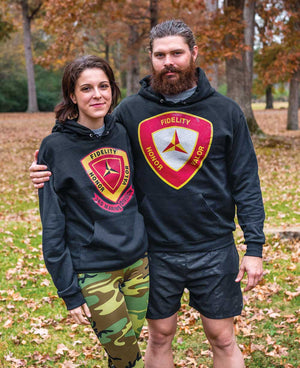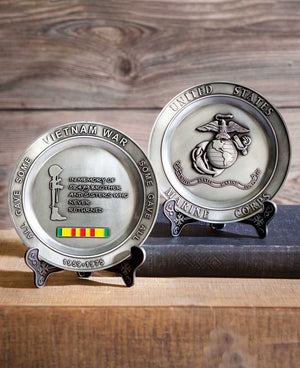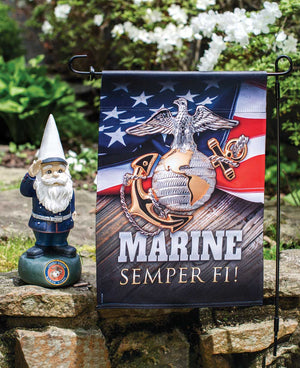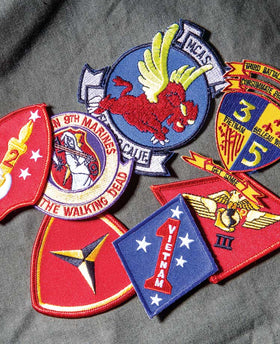Squad Tactics in Fallujah
NCO’s combat journal offers look inside squad tactics in Fallujah.
April 25, 2005
Grunt gouge
NCO’s combat journal offers look inside squad tactics in Fallujah
By Laura Bailey
Times staff writer
Perhaps no one was in a better position to see what was going on in the streets and houses of Fallujah last fall than Sgt. Earl Catagnus Jr. and his team of snipers.
Leading two sniper teams with 3rd Battalion, 5th Marines, during the battle, his leathernecks fought with every 3/5 company as the battalion made its way through the northern part of the Iraqi city last November.
The snipers saw street-level action daily, clearing hundreds of houses throughout the city. Each night, Catagnus, 26, and three of his Marines spent a lot of time talking about the lessons from each day ? what was working for small units and what wasn’t. He knew it wasn’t a sergeant’s job, but Catagnus decided he needed to write the lessons down.
Their resulting paper on squad-level tactics ? an in-depth, insightful and well-written 14 pages ? is catching the attention of top Marine leaders and is expected to help shape future urban-combat training.
“This is an extraordinary, well-done piece that should be distributed Marine Corps-wide,” said Col. T.X. Hammes, with the National Defense University’s Institute for National Strategic Studies and an expert on fourth-generation warfare.
“These guys really sat down and thought this through,” he said. “I think the initiative is exactly what the Corps needs.”
A grunt’s-eye view
Catagnus, a “retread” who left the Corps in September 2002 to attend Penn State University, might have ended up watching the war on television.
But when Operation Iraqi Freedom began in March 2003, Catagnus wanted to be among the Marines in the fight, and volunteered to return to duty as a combat replacement 16 months later.
In Fallujah, he started by keeping a journal of his experiences. Then, he decided he needed to go further.
“Just one day, I said, ‘You know something, I’m going to write this down,'” he explained.
“I thought, ‘We may never see this again. Someone needs to document this, and we need to get it done fast before we forget stuff.'”
With company and battalion officers in no position to pick up the small details of squad operations, Catagnus recruited a corporal and two lance corporals in his section to help out.
Cpl. Brad Edison, 21, would become his right-hand man, helping shape the ideas.
Lance Cpl. David Moon, 21, provided input about the combat mind-set and tactics.
And Lance Cpl. James Keeling, 22, offered the expertise of an assaultman on subjects such as demolitions and door breaching.
“I think it is important just because what we [3/5] learned was just so valuable,” Edison said. “I would hate for it to go to waste. I’m sure if there’s ever a fight like this again ? they’ll start where we were and evolve from there.”
They started brainstorming immediately after the battle of Fallujah, stealing whatever free time they could after patrols. Catagnus spent his nights writing the piece on a laptop while still in Fallujah and finished it in January. The result reflects what Marines learned in the city. Among their lessons:
? Insurgents’ escape routes are pre-planned and well-rehearsed through back alleys and rooftops. Marines quickly learned to isolate city blocks after making contact; otherwise, insurgents’ escape was certain.
? Leathernecks learned to use tanks and combined-arms tactics to root out die-hards, being mindful never to put a Marine where you can put a bullet.
? Using the buddy system and establishing footholds as rallying points also became important in preventing Marines from getting trapped or left behind in houses.
Also noteworthy are Catagnus’ in-depth descriptions of the urban terrain in Fallujah, a city described unlike any Marines have trained for. From the random, unzoned layout of the city to the floor plans of a typical house and the number of locks on exterior doors, the report details how Marines improvised to deal with the unfamiliar environment.
“All of those are specific items that can go into training,” Hammes said, making particular note of “the level of detail and usefulness for a command back here who hasn’t been there yet.”
Hammes said the report could help in the building of realistic urban training centers which, for years, have replicated European towns rather than Iraqi ones.
“If you had that [report] in your unit, you could literally build [an Iraqi] house,” Hammes said.
The overarching theme of the report is how to win battles without the high casualty cost typical of urban combat. Catagnus writes of the distinction between “top-down” and “bottom-up” building assaults and why gaining footholds is important. Most of all, he emphasizes how Marines need to look out for each other, spontaneously play off each other when the plan goes south, and never let anyone get trapped in a house.
More than anything, their work documents the reality of the squad-level fight: Marines adapting their training on the fly during in-your-face combat.
Making the rounds
Such observations have impressed Marines all the way up the chain of command, starting with their own executive officer.
“It was exceptionally well done. I’ve been in the Marine Corps for 20 years, and that was one of the best after-action reports I’ve seen,” said Maj. Todd Desgrosseilliers, XO for 3/5.
Battalion leaders were so impressed, in fact, that they kept the paper separate from their after-action reports for Fallujah.
The sergeant’s report showed how ideas stressed by the battalion commander, Lt. Col. P.J. Malay, were being employed, Desgrosseilliers said, including the concept of “tactical patience” ? that is, slow is smooth and smooth is fast ? and the importance of accountability.
While other after-action reports focus on operations at the platoon or company level and above, Desgrosseilliers said the sergeant’s report was an “all-encompassing” view of things that happened at the small-unit level.
In the months since its release, the report has made the e-mail rounds from battalion commander to battalion commander. It also made it into the hands of Maj. Gen. Tom Jones, commander of Marine Corps Training and Education Command at Quantico, Va., who was impressed by what he saw.
Now, it’s headed to the Marine Corps Center for Lessons Learned.
Changing training
For the Marine Corps Warfighting Lab at Quantico, the report comes as validation of the urban training package the lab developed.
“Not often do you see our young enlisted men writing this way,” said Maj. Daniel Schmitt, a lab official. “At the end of the day, when they write more, it means more. When I see an after-action report written by a sergeant, that’s the first one I go to. They’re seeing it. They’re living it.”
But while grounded in the tenets of Basic Urban Skills Training, the difference in Catagnus’ report is that it shows how squads adapted those lessons to a specific enemy, said Schmitt, the officer in charge of Project Metropolis, the lab’s urban-warfare experimentation effort.
“It validates a lot of things we found out,” he said. “It’s encouraging to see a sergeant and a bunch of corporals saying the same things that we found out of experimentation.”
His high praise is all the more significant given the sheer number of after-action reports he sees in compiling lessons for distribution to fleet units.
“I collate hundreds and hundreds of these things,” he said. “With that perspective, I have to say Sgt. Catagnus and his brothers did a phenomenal job.”
Now, Schmitt plans to incorporate parts of the report into urban training packages.
The report will be included on the Center for Lessons Learned Web site.
For his part, Catagnus doesn’t view the report as the be-all, end-all on urban tactics.
“It’s not a bible. It’s a guideline,” he said. “I hope it’s dissected and broken apart.”
More than that, he said, he hopes it will inspire other sergeants and corporals to step up and try their hand at similar projects.







Leave a comment